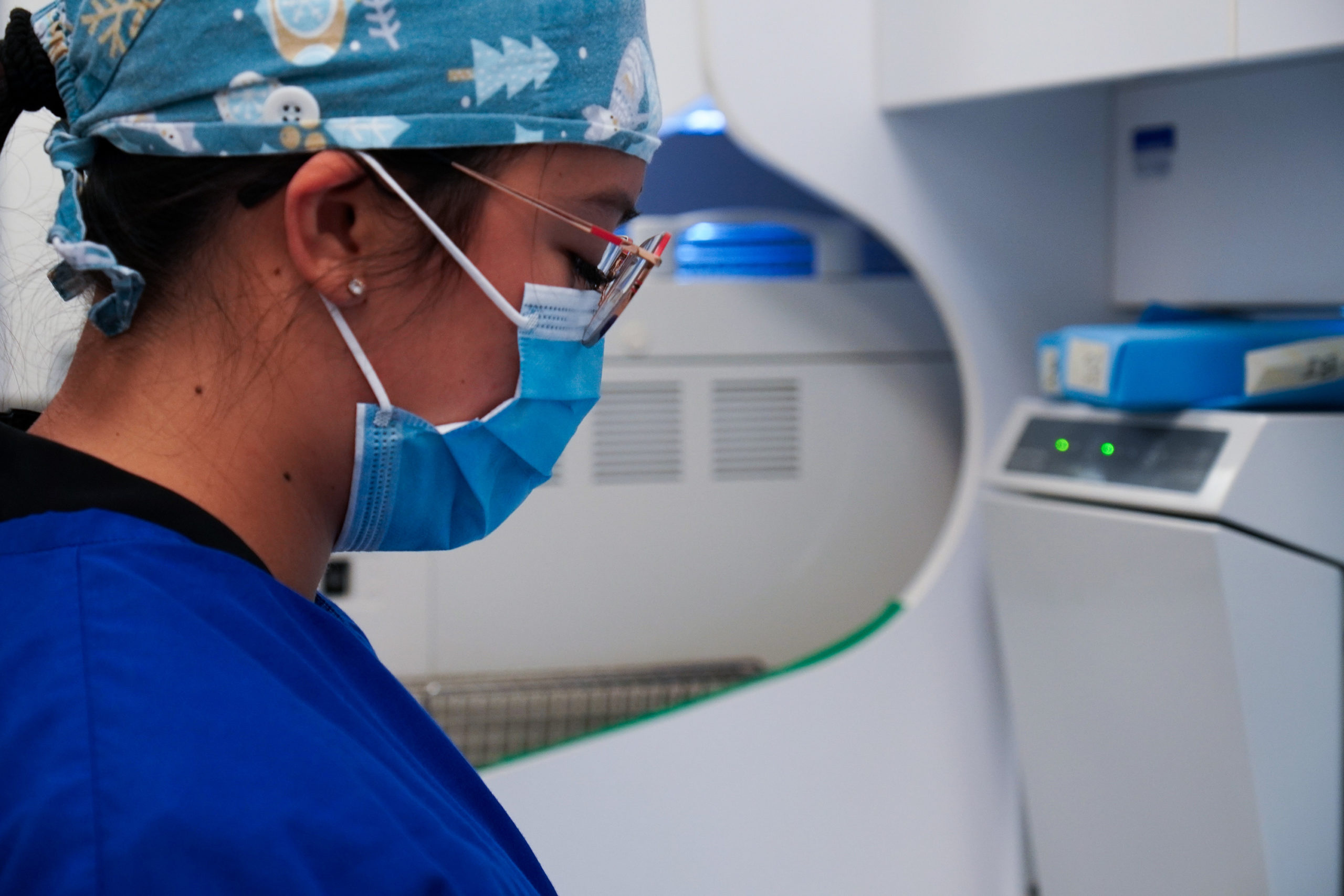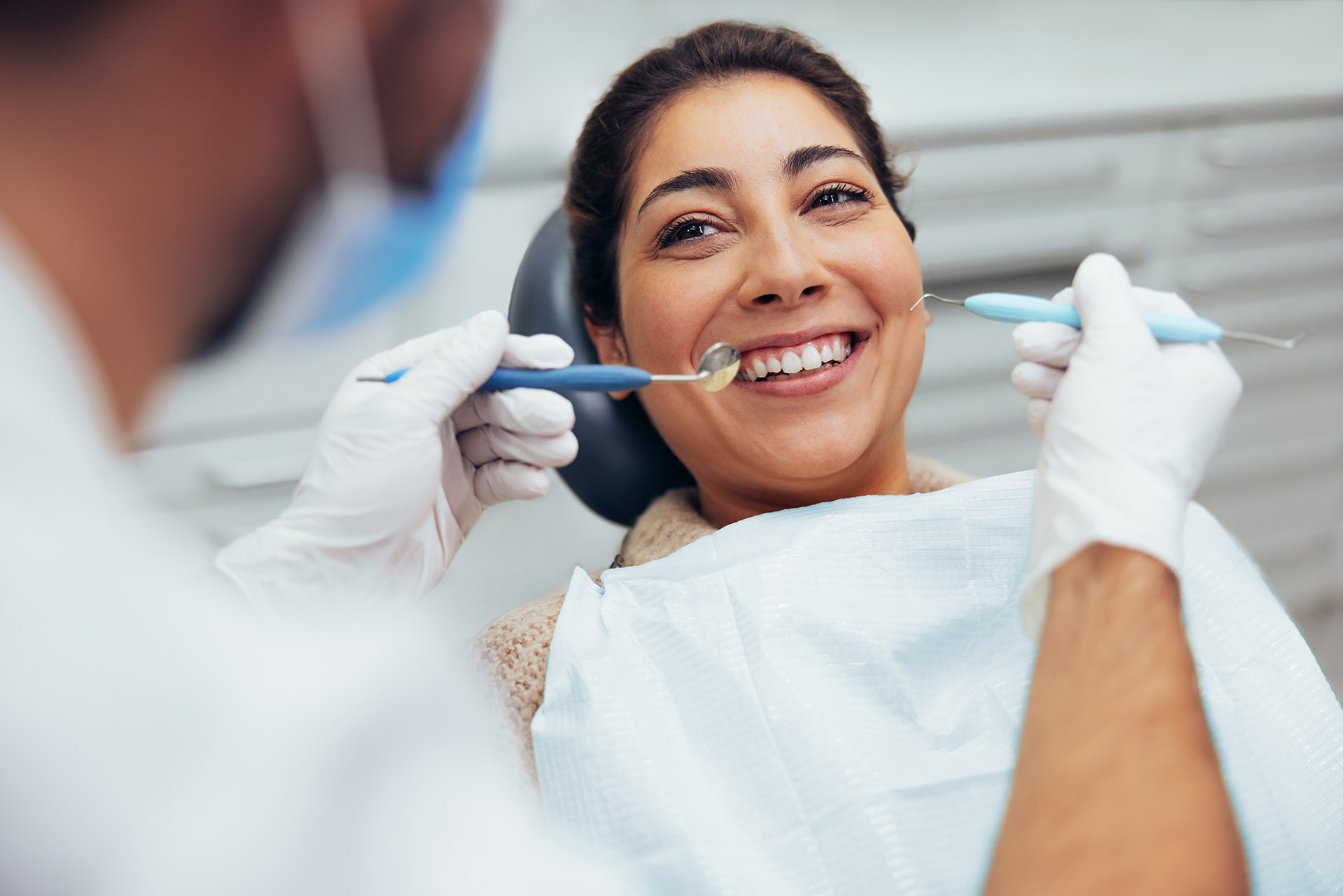When a dental emergency occurs, we are here for you
When our teeth are healthy and functioning well, it can be easy to take them for granted. When pain or injury occurs, knowing what steps to take and where to go can be difficult if we’ve never been in that situation before. Let’s explore how to identify a dental emergency and what to do if it occurs.
In emergencies involving tooth breaks, loss or other injury, we suggest aiming to seek emergency dental care within 30 minutes of the injury or trauma. In cases of severe pain, we suggest seeing a dentist as soon as possible.
When an emergency occurs, see the closest available dentist. For example, sports-related knock-outs or similar traumas should be treated at the most accessible clinic to the site of the incident. If your regular dentist is a 45-minute drive away and you’ve lost a tooth, see the closest available dentist to where you are at the time. Delaying intervention by a dentist could result in a tooth being unsalvageable.



What is a dental emergency?
Severe Pain
Extreme pain in the teeth or gums represents an emergency. Whether we can see an injury or problem is less important than the severe pain itself, which indicates something (like an infection) going on beneath the surface.
Pustule
If you perceive an unfamiliar sensation in the gums and discover a pustule (pimple) on the gums this is considered an emergency because it indicates an infection inside the tissue which has the potential to be dangerous. This is also known as a dental abscess.
Foul taste with pain
If you are experiencing pain and swelling along with a foul taste coming from one area of the mouth, this is another indication that an infection could be lingering below the surface. Not all pustules present as a ‘balloon’, you may have slow seeping around the infected tissue. Often accompanied by inflammation of the tissues.
Broken Tooth
Teeth that have broken away around a cavity or when eating something hard. Teeth that have broken are often fixable, so get yourself to an emergency dental appointment without delay.
Cracked Tooth
Cracks in teeth that cause sharp pain during use could be cracked into the pulp and root system. This is critical to rectify before infection occurs.
Knocked out tooth
Teeth that have been knocked out of their sockets by sustaining a blow are considered emergencies.
Lacerations or cuts
Severe tongue bites and lacerations of the oral tissues are emergent, particularly when bleeding won’t stop.
Broken Jaw
If you think you have broken your jaw, seeing a dentist or emergency room physician immediately is recommended.
Extremely loose tooth
If your tooth has lost its stability due to trauma or infection, it needs to be seen urgently to increase the chances of saving the natural tooth.
What is not a dental emergency?
Small chips or cracks
Small chips or cracks in the teeth that are not causing discomfort is not considered emergent. You can discuss options for treatment at the earliest available non-emergent appointment time with your dentist.
Loss of restoration
If you’ve lost a restoration such as a filling, temporary crown, or bridge, you may not need to see a dentist right away. If you are experiencing discomfort from a lost filling, placing a small amount of dental wax or sugar-free gum over the area where the filling has been lost will act as a protective barrier to decrease your discomfort until you can see your dentist. Similarly, your lost temporary crown can be replaced with the prepared tooth with a small amount of Vaseline to assist the crown in staying in place until an appointment can be made with your dentist.
Lodged food
If you have something stuck between your teeth that has not been able to be removed using dental floss or rinsing, call your dentist to arrange a non-emergent appointment at your earliest convenience. Avoid poking at the area with tools or implements, as you may risk damage to the enamel or surrounding tissues.
Minor aches
Dull pain that is remedied by over-the-counter medications does not need to be seen emergently.


What to do in certain dental situations?
Oral pain
Never use heat to treat pain in the mouth or jaw. Heat can draw blood to the area, causing increased inflammation and can potentially worsen the pressure in an abscess, causing further pain. For severe dental pain, use an ice pack on the outside of the mouth and/or hold ice water in the mouth to assist in decreasing inflammation and pain until you can diagnose the cause of the pain at your emergency dental appointment.
Abscess
You likely have a dental abscess if you see either a weeping or a contained white head on the gum line. These infections below the gum line need to be seen before they become systemic or put the tooth at risk. Avoid extremely hot or cold beverages and rinse your mouth frequently with lukewarm salt water until you can see your dentist.
Abscessed teeth frequently require root canals or tooth extraction and are likely to require antibiotics as well. Avoid taking ibuprofen-based pain relievers like Advil, as these medications can complicate dental procedures because they have blood-thinning properties.
Breaks and cracks
Collect all pieces of your tooth, gently rinse the pieces and your mouth, taking care not to lose any pieces. Place the pieces in the cheek pocket until you can see a dentist or transport the pieces in a clean container full of cold milk. If your tooth is cracked and causing pain, avoid chewing on that side until you can see your dentist.
Knocked out tooth
Act quickly if you have had a tooth knocked out of its socket. Begin by holding the tooth by its crown (never by its roots). Gently rinse the mouth and tooth, careful not to remove tissue or clean the tooth aggressively. Gently place the tooth back into the socket, applying gentle pressure by closing the mouth to keep the tooth in place. If the tooth does not go back into the socket, store it in your cheek or a clean container of cold milk and head directly to the nearest emergency dentist.
Oral cuts
If you have injured the tissues of the mouth and require stitches, rinse the mouth gently and apply gauze and gentle pressure to lacerations or injured tissue. Get to the nearest dentist, or, your nearest emergency room may be able to offer treatment to injured tissues.
Broken jaw
If you suspect you’ve broken your jaw, immediately apply ice to minimize swelling and head to your nearest dentist or emergency department for diagnosis and treatment.
We’ll give you a reason to smile
We’re accepting new patients and look forward to serving you, so please give us a call or request an appointment online; see you soon!
